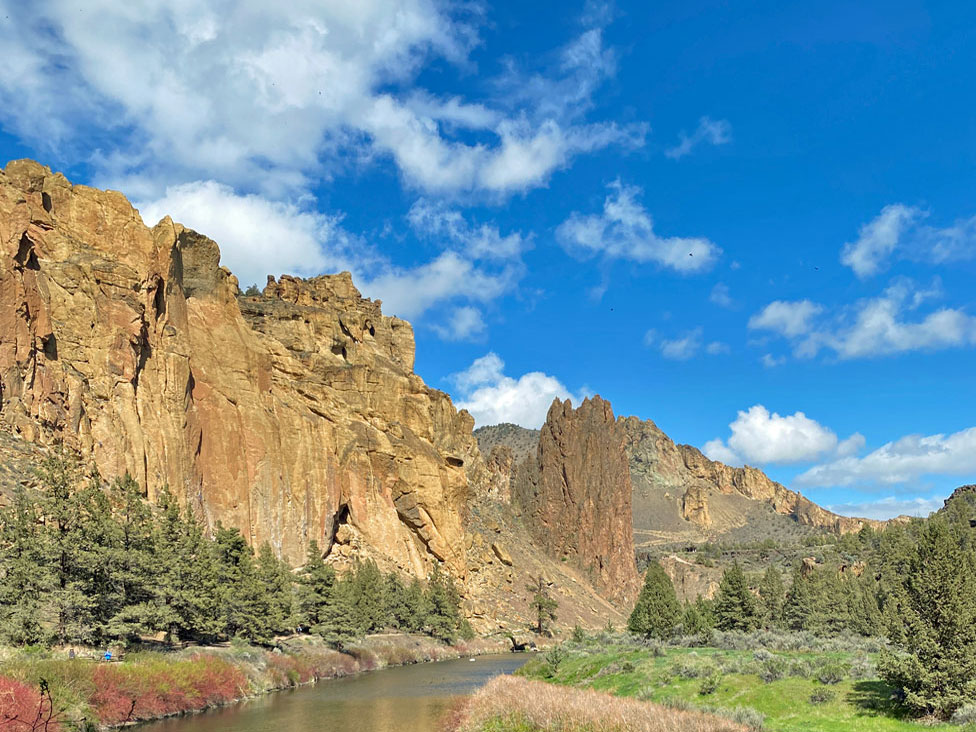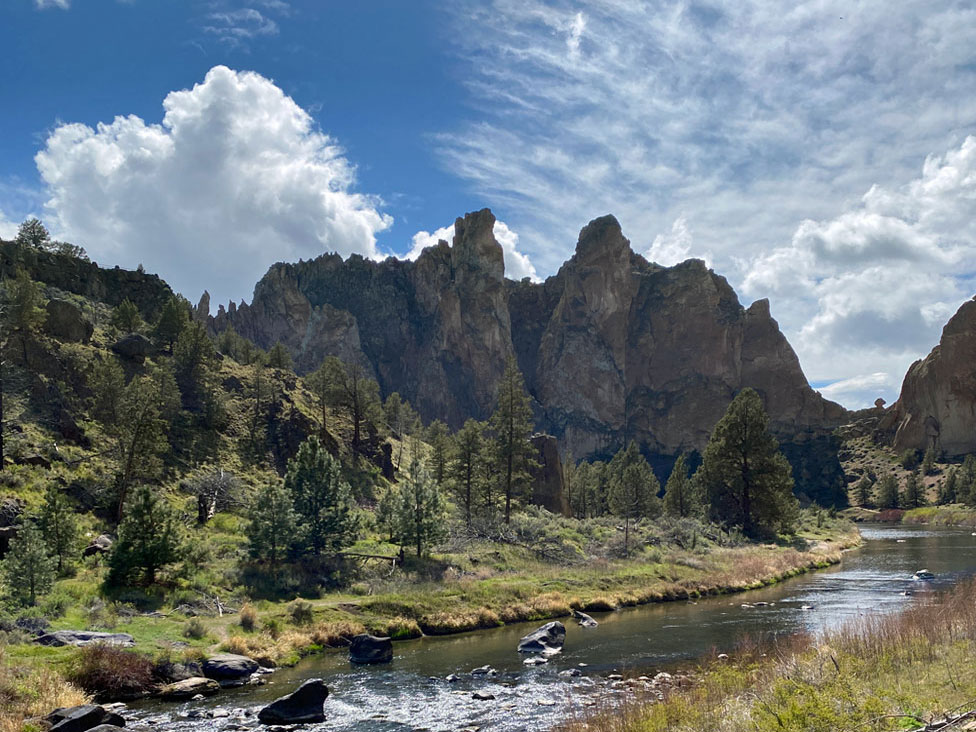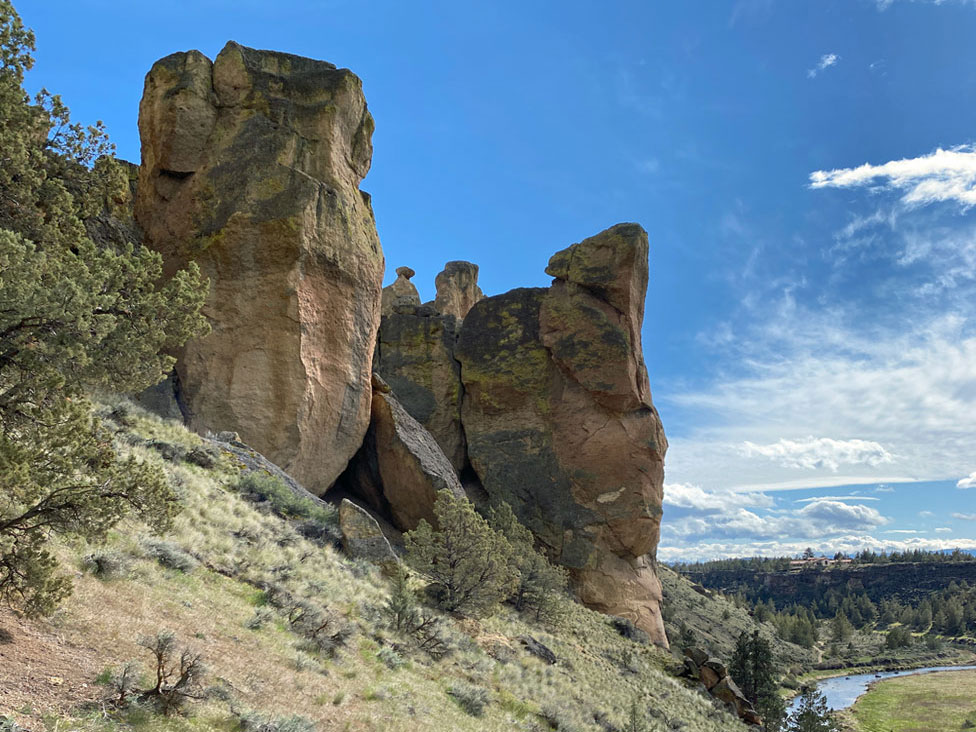A pivotal period: Century-old state park systems face modern issues
The Washington Post
By Erin E. Williams
April 7, 2022
Glaciers in Alaska. Dinosaur fossils in Montana. Slot canyons in Nevada. Hoodoo rock formations in Utah. Redwoods in California. Bison in South Dakota. Native American burial mounds in Wisconsin. Military forts in Delaware. Memorials celebrating civil rights heroes in New York.
Across the country, 9,095 state parks span 19 million acres and boast an abundance of natural and cultural riches that can rival those in the national park system, according to 2019-2020 data from the National Association of State Park Directors.
They also highlight local history and are often more accessible. “One of the best benefits that state parks provide in Texas or any other state is that they’re a nice, affordable outdoor getaway,” said Rodney Franklin, state parks director for the Texas Parks and Wildlife Department. The Texas state parks system will celebrate its centennial next year.
“Instead of flying to Arizona to visit the Grand Canyon, I can go somewhere nearby,” said Margaret Walls, an economist and senior fellow at Resources for the Future, a Washington-based independent nonprofit research organization focused on environmental and natural resource issues. “And that option is so important for us all to have.”
Each state park system is different — some are more developed than others, and infrastructure can include rudimentary campgrounds or concert venues — but together they serve a unique public lands purpose. And many systems are at a milestone: a centennial celebration, give or take a few years. These anniversaries are highlighting how pivotal a time this is for state parks, which are grappling with challenges that include decades of underfunding, surging visitation numbers, pandemic closures, exclusionary histories and climate-change-fueled catastrophes that will affect their survival even beyond the next century.
The great outdoors, close to home
When I met Chris Havel, associate director for the Oregon Parks and Recreation Department, at Tumalo State Park near Bend in March, he was on his way to a birthday party. Oregon’s state park system, which includes 254 properties over 122,847 acres, turns 100 this year.
“While some people will travel hours to get to their favorite park, for most people, it’s a half-hour away,” Havel said. Tumalo State Park is no exception: It’s a short bike ride from my Bend home. Such easy access has allowed some parks to build devoted visitor bases that support the parks by participating in conservation and funding programs.
Belle Isle — a 987-acre island in Detroit and part of Michigan’s 103-year-old state park system — is only a half-hour from Swathi Ravi and her family, who visit about once a month. “Belle Isle is a beautiful place, and it’s special for so many people,” she said. During the summer, her family picnics under the trees on the beach, and her 2-year-old daughter splashes in the water.
To celebrate her daughter’s first birthday, in 2020, Ravi’s family began volunteering to plant native saplings in Belle Isle through the Happy Little Trees program. After two birthdays and nearly 100 trees, Ravi is committed to the tradition. “It’s so joyful and fulfilling,” she said. “We have so much satisfaction that we’re doing something for the environment, and we want the trees to live even beyond our children’s lifetimes.”
A variety of offerings
“Many state parks occupy a special niche between typically more developed municipal parks and a backcountry experience,” said Havel, who estimated that about 85 percent of Oregon’s state parks play that role.
The parks in California’s 95-year-old system make up the largest and most diverse recreational, natural and cultural heritage holdings of any state agency, including 279 parks scattered over 1.65 million acres of protected land, 15,000 campsites, 5,200 miles of trails, 3,195 historic buildings and more than 11,000 known archaeological sites. California’s Yosemite Valley and Mariposa Grove became the first state park when it was established in 1864.
The 98-year-old New York state park system is home to standouts such as Niagara Falls, the United States’ oldest state park, and Letchworth, the Grand Canyon of the East.
“Nearly all of the state’s most sublime landscapes and cultural resources are under state or local jurisdictions,” said Erik Kulleseid, commissioner of the New York State Office of Parks, Recreation and Historic Preservation. So, the state parks you’re seeing are the very best of what New York has to offer.”
Funding challenges
Just as each state park system varies, so do their funding sources. But research by Walls has shown that, since the 1990s, general fund revenue for state parks has declined overall. Today, funding comes mostly from user fees and dedicated state sources such as lottery revenue and taxes. The federal Land and Water Conservation Fund now provides about $330 million annually to states, some of which may go to state parks. And state-directed pandemic recovery dollars under the Biden administration’s American Rescue Plan have buoyed some systems; Michigan is using $250 million of its relief to modernize its 103 state parks and create a new one — an investment it estimates will yield $1 billion in economic benefits.
Legislative support also helps other state systems. A $50 million package is funding crucial state park upgrades in Oregon. Over the past decade, New York has invested more than $1.5 billion in its state parks and is planning another $200 million for each of the next five years — an age-appropriate gift for the system’s 100th birthday in 2024. And California’s $1 billion Outdoors for All budget package includes more than $500 million to increase state park access by centering investments in underserved communities.
“Overall, state parks are under-resourced compared to their operating costs,” Walls said. Decades of funding shortages have caused ballooning repair needs and have further complicated challenges such as increased visitation, climate change and an overdue reckoning with access and equity.
“We’re still advocating for state parks and for their funding to remain as sustainable and predictable as possible, which allows us to plan for the future and be strategic about our dollars,” said Franklin, who is also secretary-treasurer for the National Association of State Park Directors.
Record-breaking visitation
At the same time that parks are dealing with reduced funding, however, they’re also dealing with increased visitation. People made more than 786 million visits to state parks from July 1, 2019, to June 30, 2020, according to the National Association of State Park Directors. (In comparison, the National Park System’s 423 units received 297.1 million visits in 2021.)
Notwithstanding pandemic-related closures that dampened visitation across the country, New York, Texas and Oregon all reported record-smashing 2021 visitation. That’s part of a national trend of increasing visitation, which can cause overcrowding, safety issues, and wear and tear.
“Some facilities have been loved to death,” said Franklin, citing the system’s backlog of upgrades, maintenance and repairs of decades-old infrastructure.
“Visitation reflects value,” Walls said. “And it’s a sign that we need to put more money into the systems, which don’t have enough money to manage parks as they are, much less build adaptation plans for the future.”
The next 100 years
Those plans are crucial as state parks face climate change disruptions. And while park directors have typically planned 15 to 20 years ahead, some, like those in California, are thinking centuries ahead in terms of ecological changes. Each system mentioned in this story is reducing greenhouse gas emissions, building resilience and mitigating effects of climate-change-related storms, fires and floods.
In the past two years, wildfires burned more than 125,000 acres across 34 California state parks — including Big Basin, its oldest state park and home to some 1,800-year-old redwoods.
Although Oregon’s devastating wildfires have not yet burned much state park property, some temporarily closed to protect staff and visitors from smoke. The state’s smaller parks are relatively easy to groom for wildfire preparedness but are threatened because of adjacent public lands.
“We can’t just wait for forested lands to burn. We must be anticipatory,” Havel said.
Climate change also means difficult choices for coastline parks: Do you adapt or retreat? New York State Parks is stabilizing and replenishing some of its 322 miles of shoreline. California State Parks has adopted an integrative adaptation strategy for rising sea levels across its 128 coastal parks. Texas state parks are building structures with resilient materials in areas with some natural protection from hurricane-force winds and away from flood plains. And Oregon is using some of that $50 million fund to relocate the coastal Cape Lookout State Park campground sections to higher ground.
“Especially in coastal areas, parks provide ecosystem services well beyond their recreational services,” Walls said. They increase water quality, buffer flooding and protect against sea level surge. “They’re also impacted by damage, so they need to be managed so they can provide resilience.”
Rising temperatures also mean longer visitation seasons, which exacerbates overuse and decreases offseason recovery time for fragile natural areas.
Improving access
The Oregon system’s centennial is not just a celebration; it’s also an opportunity to reflect on the state’s often painful history regarding race, including its treatment of Native Americans, Havel said. To navigate an inclusive path forward, the state is working with tribal and other partners to open doors for new users.
Nationwide, states are working to equitably space parks and to lower entry barriers. They are seeking out and engaging with people who have historically been denied recreational opportunities, including those with disabilities, people in poorer communities, those without transportation and people whose experiences have been dismissed or overlooked.
“We want to make sure that parks reflect everyone and that we’re telling stories that are relevant to all New Yorkers,” Kulleseid said.
Greater inclusivity can only benefit the parks. “Our legacy,” Franklin said, “is growing the next generations of outdoor enthusiasts and conservationists, who will grow to love parks and support them 50 and 100 years from now.”
Original at The Washington Post.





